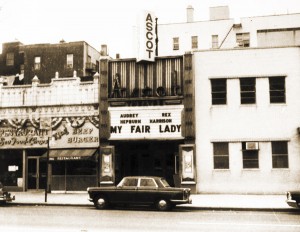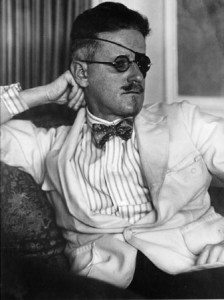March 7th, 2013 § § permalink
At 13 years of age HG was a busy little guy. Following after- school punchball or association football, HG would cruise Kingsbridge Road in the Bronx and help the shopping women. “Carry your bundle, Lady?” said endearing HG and this meant trudging, while heavily laden with shopping bags, up five stories of an apartment house for a nickel or dime tip. A parental allowance was beneath HG’s dignity. HG had to hustle in order to indulge in HG’s Saturday afternoon aesthetic and culinary treat. This was the double feature at the tiny Ascot Theater on the Grand Concourse. HG would pick up some chunks of dry, garlic salami (“a nickel a shtickel”) at the Tower Delicatessen plus two sour dill pickles at a neighboring “appetizing” store (these pickles were plucked fresh from a barrel). Armed with food and a pack of war-time Rameses cigarettes (yes, HG was a smoker even then, a habit he cultivated for some 50 years), HG lounged (and nibbled and smoked) in a balcony seat and succumbed to the joys of European cinema. The Ascot played only art films, mostly French and Russian (and the occasional American film like John Ford’s The Informer.) HG was enthralled by the French “noir” movies starring Jean Gabin (Port of Shadows, La Bete Humaine). Gabin was HG’s favorite movie hero and HG was gratified to learn that Gabin, during World War Two, left a brief Hollywood career (and a blazing romance with Marlene Dietrich) to join the Free French army and fight with the Allies in North Africa. He won the Medaille Militaire and Croix de Guerre and was part of the first contingent to enter liberated Paris. HG’s two favorite films that he watched at the Ascot were Le Grande Illusion (directed by Jean Renoir and starring Gabin) and aforementioned The Informer (starring Victor McLaglen playing “Gypo Nolan.”). HG still recalls Gypo’s last words in the film: “Frankie, your mother forgives me!!”
Years later the Ascot stopped showing art films and devolved into a house of pornography which did not last for long. At last glance the glamorous Ascot was subdivided into a variety of retail spaces while retaining vestiges of its lovely terra cotta facade. In 1988 the writer Avery Corman wrote a nice piece about this stretch of Grand Concourse for the New York Times. It is still relevant today.

November 5th, 2012 § § permalink
HG and BSK often settle down after dinner around the warming fireplace and watch a film courtesy of Netflix. A few nights ago the duo watched films on successive nights that were set in India. The films were Gandhi (overlong, talky, simplistic — but saved by Ben Kingsley’s remarkable performance in the title role) and The Man Who Would Be King (a rousing John Huston version of the Kipling tale with Sean Connery and Michael Caine — a critical success but, surprisingly, a box office failure). For fun, HG and BSK thought they’d preface each film with Indian food. So, a peek through two favorite cook books Vij’s Indian Cuisine and Vij’s At Home, revealed two splendid vegetable dishes Cauliflower Steaks and Eggplant, Tomato and Green Onion Curry. Lots of cumin and turmeric in the cauliflower dish. Cayenne and Mexican chile powder gave the eggplant dish heated zip. Warm naan, fluffy rice plus mango chutney and lime pickle were part of the meal. Good eating. Had some leftovers for the next Indian meal (and film). This time BSK grilled a juicy chicken breast rubbed with cumin, garlic and garam masala. Worthy addition. (If in Vancouver, B.C., do not miss the two famed Indian fusion restaurants, Vij’s and Rangoli.)
A few nights later Netflix delivered Under The Volcano, a film set in Mexico The novel by Malcolm Lowry is riveting but the film, despite a virtuoso performance by Albert Finney, is a fallure. With John Huston directing, the fillm, of course has some rewards — the eerie cantina-hell that dominates the last part of the film, Anthony Andrews’ plaintive singing of a Spanish Loyalist song about Madrid and the beautifully photographed Day of the Dead holiday. HG and BSK are unsympathetic to self destructive drunks and after watching Finney’s bravura self destructing they could only murmur: “We don’t care.” The duo had thought about Mexican food before the film but opted for pasta with broccoli di rabe and grilled Italian sausage. HG and BSK will save the Mexican dishes for a more rousing film set in Mexico — possibly Viva Zapata.

June 23rd, 2012 § § permalink
June 16 was Bloomsday a day of celebration and commemoration of the life of the writer James Joyce and his extraordinary novel, Ulysses. The day refers to the June 16 in the novel. The day in which all of the action takes place during the one day peregrinations throughout Dublin of its Jewish hero (or anti-hero), Leopold Bloom. HG was introduced to the wonders of Joyce in his CCNY college days by Prof. Theodore Goodman, a legendary figure at City College. Goodman taught a course devoted to writing short stories. Students wrote stories. Read them aloud. These were then criticized by Goodman and fellow students. Criticism was withering. To say the least, punches were not pulled. The class text was Joyce’s collection of short stories, Dubliners. The Joyce stories were meticulously analyzed under Goodman’s direction. We leaned there were no accidents in these stories. They were pieces of prose architecture, each word essential in the total framework. It was a humbling experience for embryonic writers. Goodman was elderly and in frail health. Sometimes he missed a class. HG and his mates waited outside the classroom hoping that he would show up. There was a feeling of dread. We loved him, even though he was no Mr. Chips. He was tough and his one-to-one conferences with students could be a scalding experience. Goodman lived through his class with HG and gave HG an “A.” Whenever experience lowers HG’s self esteem, HG remembers that “A.”
In a recent review in The Economist of a Joyce biography by Gordon Bowker, the reviewer noted: “The hero of ‘Ulysses’, Leopold Bloom, was born out of Joyce’s affection and fascination with Jewish culture; which would lead him, in turn, to help several Jewish men and women escape Austria and Germany during the second world war.” It would have been appropriate for HG to celebrate Bloomsday by accompanying a bialy with cream cheese with a glass of Dublin-brewed Guiness Stout. But, in the absence of bialys in New Mexico, HG had to be content in raising a snifter of kosher Slivovitz to the memory of Joyce, a gifted (and difficult) man.
Later this year, during the Christmas season, HG and BSK will watch The Dead, the John Huston cinema version of the longest story in Dubliners. In HG’s opinion, this is the finest cinema version of prose fiction ever achieved.



